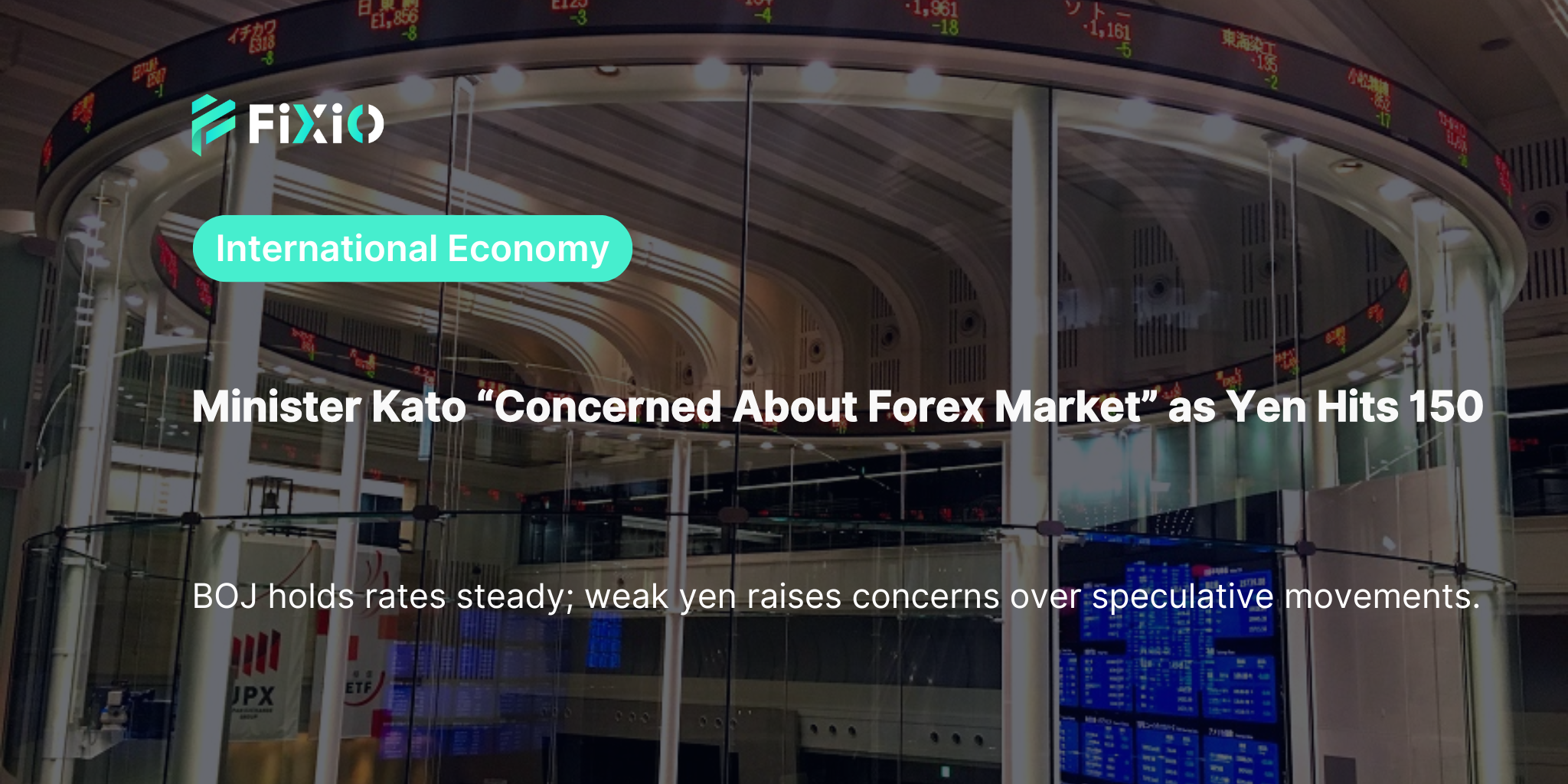
On August 1, 2025, Finance Minister Katsunobu Kato stated in a post-cabinet press conference that he is “concerned about foreign exchange market trends, including speculative movements,” in response to the rapid yen depreciation.
This statement followed the Monetary Policy Meeting held by the Bank of Japan on July 31, where the central bank decided to leave policy rates unchanged, showing a cautious stance toward further tightening.
The day after the announcement, the yen fell to the upper 150s against the U.S. dollar in forex markets—its lowest level in about four months. The market widely perceived that the interest rate gap between Japan and the U.S. would not narrow anytime soon, accelerating yen selling and dollar buying.
In the United States, the Federal Reserve continues its hawkish stance to combat inflation, encouraging trades based on widening interest rate differentials.
Minister Kato refrained from making detailed comments on specific levels, noting that “such remarks could have unforeseen effects on the market.” However, he emphasized that “exchange rates should reflect fundamentals and move in a stable manner.”
This reflects the government's and BOJ’s shared stance of prioritizing long-term macroeconomic stability over short-term market fluctuations.
While a weak yen strengthens Japanese exporters’ earnings, it also increases import costs—especially for energy and food—putting pressure on consumers and potentially fueling inflation. This raises the importance of careful policy responses in the coming months.
Minister Kato also addressed U.S. trade policies, noting that progress in negotiations with both the U.S. and the European Union (EU) has helped reduce global economic uncertainty. This is seen as a positive factor for Japan’s external economic environment.
At present, the BOJ maintains its accommodative monetary policy. However, if yen depreciation accelerates and significantly affects consumer prices and living standards, policy adjustments may become necessary. The BOJ’s actions and the potential for foreign exchange intervention by the Ministry of Finance will remain closely watched.
The recent depreciation of the yen and related government remarks highlight more than just temporary market fluctuations—they signal a turning point in Japan’s monetary policy and international trade strategy. The government continues to emphasize forex stability while seeking to build market confidence through structural reforms rather than short-term interventions.
Going forward, the collaboration between the BOJ and MOF, as well as their timing and clarity of action, will be crucial in navigating exchange rate stability and overall economic management.
Stay updated with detailed analysis of forex markets, BOJ policy, and macroeconomic trends at the official FIXIO Blog.
This article reports on the comments made by Finance Minister Katsunobu Kato on August 1, 2025, regarding the foreign exchange market and the sharp depreciation of the yen. It analyzes the underlying factors such as the Bank of Japan's continued cautious stance, widening interest rate differentials with the U.S., and recent developments in global trade. As the yen fell into the 150 range for the first time in four months, both the government’s and market’s responses are closely watched.
Superior trade execution & trading conditions with the NDD method.

The online FX industry provides a platform for investors worldwide to engage in the buying and selling.

Subscribe to our daily newsletter and get the best forex trading information and markets status updates
Trade within minutes!
Comment (0)